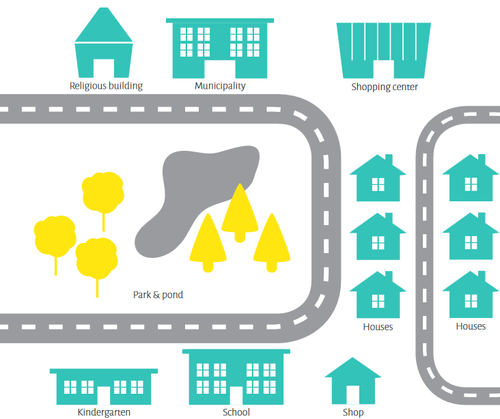|
|
| Line 7: |
Line 7: |
| | | | |
| | [[File:Group-size.png | 20px | Group Size ]] 12-24 people | | [[File:Group-size.png | 20px | Group Size ]] 12-24 people |
| − |
| |
| − | [[File:Created-by.png | 20px | Created By ]] [[User:Marta.gawinek |mgd]]
| |
| | | | |
| | [[File:Keywords.png | 20px | Keywords ]] ideation, project development, civil society | | [[File:Keywords.png | 20px | Keywords ]] ideation, project development, civil society |
| Line 55: |
Line 53: |
| | | | |
| | ==Source== | | ==Source== |
| − | * Facilitator handbook #1: M. Gawinek-Dagargulia, E. Skowron, N. Zimmermann (Ed.): [http://competendo.net/en/Handbooks_for_Facilitators Steps toward Action; Empowerment for self-responsible initiative; Help your learners to discover their vision and to turn it into concrete civic engagement]; Facilitator Handbook #1; MitOst Editions 2016 | + | * Facilitator handbook #1: M. Gawinek-Dagargulia, E. Skowron, N. Zimmermann (Ed.): [[Steps Toward Action]]- Empowerment for self-responsible initiative; Help your learners to discover their vision and to turn it into concrete civic engagement |
| | | | |
| | + | <hr class=boldline> |
| | + | <noinclude>{{:Block: Author Marta Anna Gawinek Dagargulia}}</noinclude> |
| | </div> | | </div> |
| | __NOTOC__ | | __NOTOC__ |
Revision as of 00:08, 2 May 2022
Let your participants take a look at their neighborhood. They may draw, sketch, or paint a map and put in all relevant information.
 60 min
60 min
 big sheets of paper or posters and pens
big sheets of paper or posters and pens
 12-24 people
12-24 people
 ideation, project development, civil society
ideation, project development, civil society
Related:
Handbook #1
Steps toward action

M. Gawinek-Dagargulia, E. Skowron, N. Zimmermann
First handbook of our Handbooks for Facilitators: Read more
Goal
Let your participants take a look at their neighborhood and the social needs and wishes.
Steps
1. Introduction: The participants work at a map for their neighborhood. They may draw, sketch, or paint a map and put in all relevant information.
- Where can you meet the target group of your planned activities? (in the example on the preceding page it was children)
- Which public places are there in general?
- Which places does the target group visit and use?
- What are the needs of the target group?
2. Mapping: Let your participants place their ideas on the map.
3. Exchange/presentation: If needed, the different maps can be presented to each other or in a plenary session or in a gallery/market setting
Reflection
- What aspects were quickly coming up?
- What was different to your first assumptions?
- What could be first ideas for an initiative?
- Who else is important - as a) partner, b) source of information, c) supporter?
Source
- Facilitator handbook #1: M. Gawinek-Dagargulia, E. Skowron, N. Zimmermann (Ed.): Steps Toward Action- Empowerment for self-responsible initiative; Help your learners to discover their vision and to turn it into concrete civic engagement
Marta Anna Gawinek-Dagargulia
Facilitator, coordinator of empowerment programs, author and program manager in the fields of cultural activism and civi education. Lives in Warsaw (Poland), head of SKORO association.



